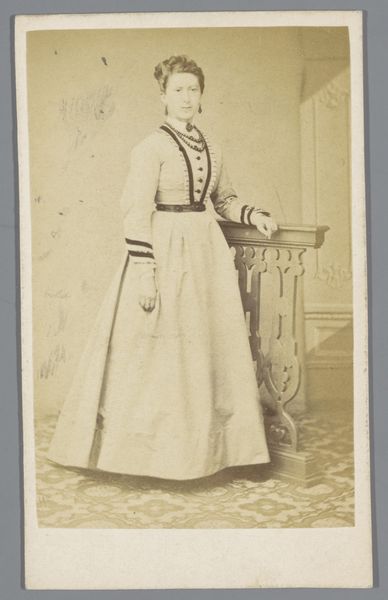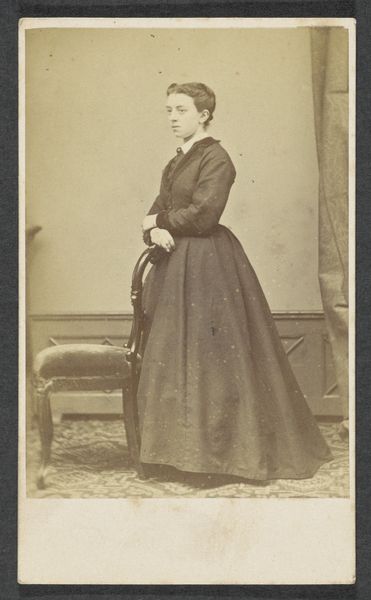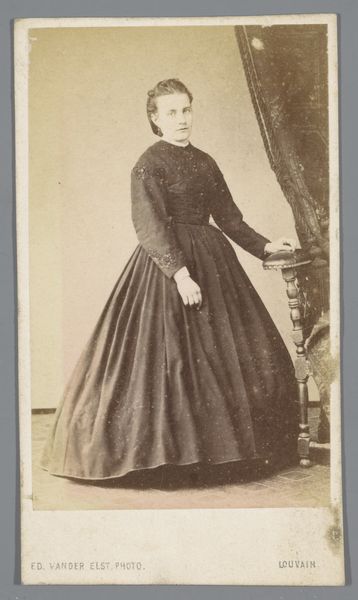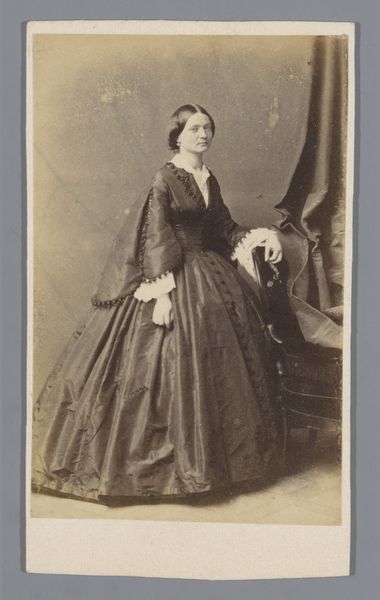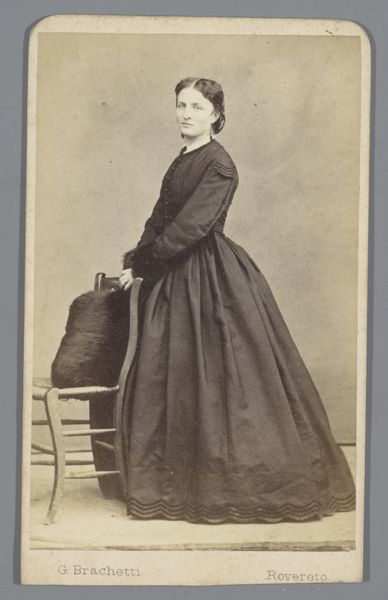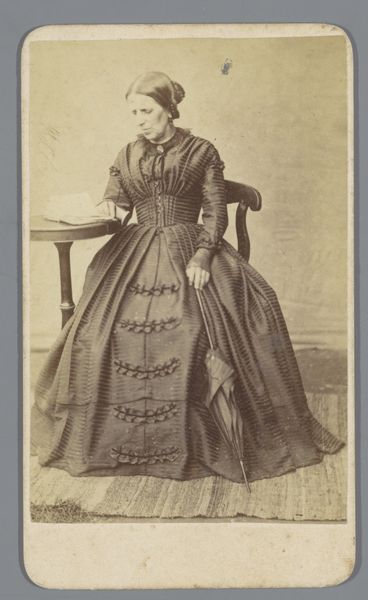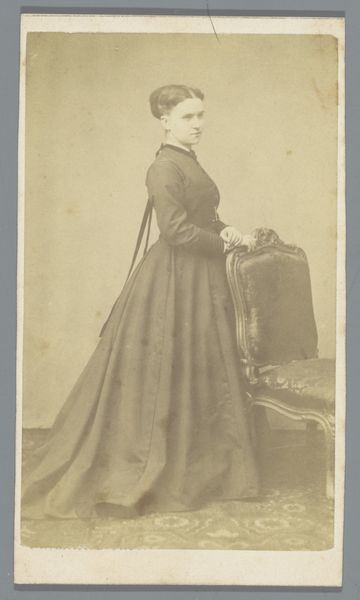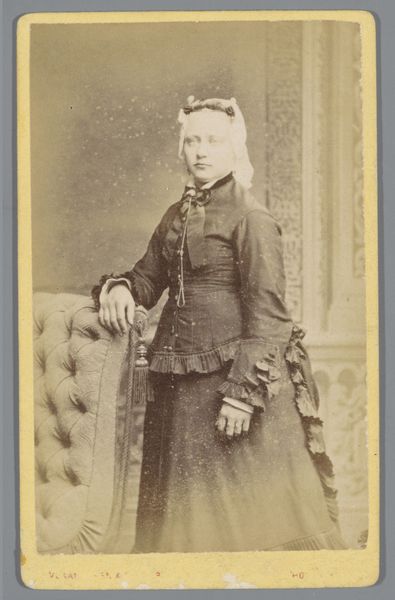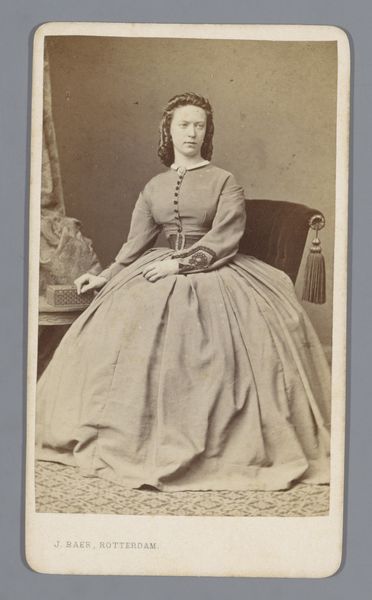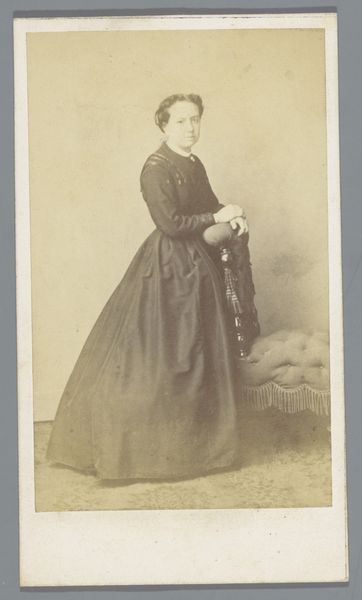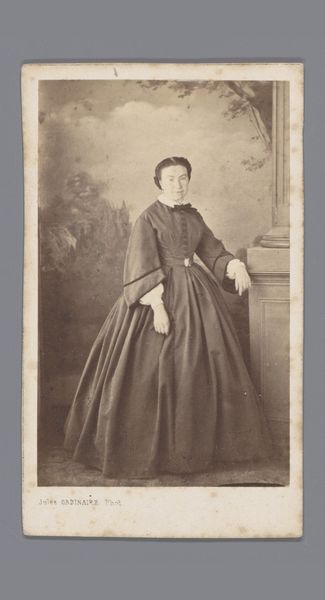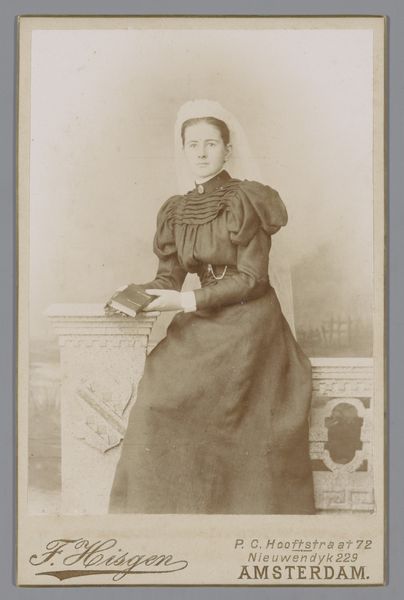
photography, albumen-print
#
portrait
#
photography
#
19th century
#
albumen-print
Dimensions: height 105 mm, width 61 mm
Copyright: Rijks Museum: Open Domain
Curator: What a fascinating albumen print! This is "Portrait of an Unknown Standing Woman," likely created sometime between 1865 and 1887 by Jan George Mulder. Editor: My first thought? Somber. The subdued tones and her very direct gaze convey a real gravity. Curator: Absolutely. Photography during this era carried a certain weight; it was often a solemn occasion. The woman’s dress is also interesting. Note the high neckline and the cut; she's adorned in symbols of piety, her posture is stiff. There's a real sense of propriety. Editor: Right, the very *act* of being photographed would have been a significant, deliberate event. The presence of that chair almost feels performative—as if to reinforce her status, or maybe suggest domesticity and control of her domain. Curator: Good point. Think about the cultural emphasis on representation and memorialization during that time. Photographs were becoming accessible but still functioned, in many ways, as secular icons or votive images. Her gaze might reflect a deep desire to be remembered. Editor: It almost makes you wonder about her place in society, about the pressures on women and how that influenced photographic representation. The image is loaded. The stark simplicity emphasizes restraint, which arguably, tells you more about social restrictions than personal expression. Curator: And consider the technology—the albumen print itself. The chemical process lent images an almost ethereal quality that people found moving. We might look at it now and see sepia tones, but contemporaries might see something far more mystical and emotive. Editor: It makes me reflect on how images, even straightforward portraits, become intensely layered records—holding individual memory, social identity, and the aesthetic fingerprints of a whole era. Curator: Yes, these details are more than the sum of their parts; in fact, their arrangement within the picture plane serves to further emphasize a woman, rigid, reserved, and holding her composure. Thank you for reminding me to think more broadly. Editor: It’s reciprocal. Seeing this era through the iconography has sharpened my awareness to the agency and the restrictions represented here.
Comments
No comments
Be the first to comment and join the conversation on the ultimate creative platform.
